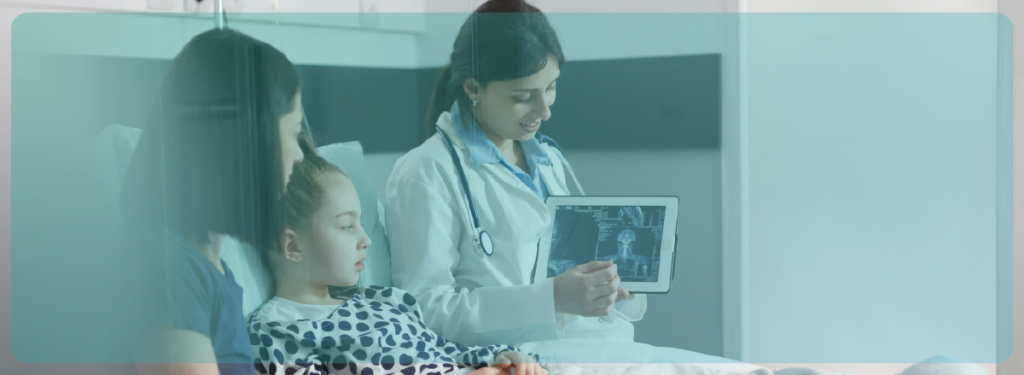Efficient Patient Management: How Patient Management Software Can Help Streamline Your Workflow

Table Of Contents
- Introduction
- What Is Patient Management?
- What Is Patient Management Software?
- Applications Of Patient Management Software
- Key Benefits For Hospitals And Patients
- How To Choose Patient Management Software?
- Key Criteria To Be Focused On While Finalizing The Vendor For A Patient Management Software
- How Does PMS Relate To Patient Experience (PX) Technology?
- Final Thoughts
Introduction
If you are a healthcare provider, you would know how important it is to have a sound patient management system. These systems make your and your staff’s life a whole lot easier, but they can also help improve patient care.
In this comprehensive guide on patient management software (PMS), we will look at some of the different types of available solutions and the benefits they offer. We will also discuss some of the key features you should look for when opting for a PMS software.
Key Learning Points
- Today patients demand personalized experiences from their care providers, and patient management is the key for hospitals to stay relevant
- Patient management software is the means to achieve better operational efficiency as well as better patient satisfaction scores
- There is an array of use case scenarios where PMS can play a key role for both hospitals as well as patients
- When it comes to selecting the best PMS and the vendor, certain guiding principles must be kept in mind
What is Patient Management?
Patients’ expectations of their health care provider have risen to an all-time high in this age of increased consumerism. To address this, health care institutions need to go beyond just treating illness.
Patient management involves the process of offering the right experience to the patients with the help of technology. And it covers the entire patient journey – right from finding a doctor, booking an appointment, checking in to the hospital, consulting with the care provider, ordering a lab test, even downloading the lab reports online, and way more. It is an ever-expanding field in the patient journey which has to be managed to provide the perfect experience to the patient.
It should also be kept in mind that even though patient management has patients at its core, hospital operation also plays an important role. When the processes and systems are introduced for patient management, that in turn streamlines the processes in the hospital.
Patient management entails all those activities and practices that are undertaken to improve and enhance all interactions between patients and hospitals, mapping all critical touchpoints along the way.
What is Patient Management Software?
Patient management software (PMS) is a solution that helps health care providers organize, enhance and connect all their interactions with their patients.
Patient management software is a broad term with two categories of definitions. One definition refers to a software tool that streamlines processes within a medical practice or hospital. The other refers to an entire system of care involving both patient and practice.
Digital tools that integrate with medical devices (such as wearable technology) to collect personal data, or those that use data or perform analysis to help a physician diagnose or treat a patient can augment the overall patient experience. Instead of handling tasks like booking appointments, checking in patients at an office, or billing, the goal of these systems is to increase patient engagement and help them take an active role in their own health care.
There are many different names and acronyms for patient management systems, like patient information management system (PIMS) or systematic patient management. Still, they all seem to have the same general goal of streamlining care.
Patient management software considers care providers as well as the patients as its users. Such software have modules which cater to the different needs of each user.
For example, a reminder module or a communication module would help the patient stay informed about an upcoming appointment, while the scheduling module would help the doctor to view and modify their schedule.
As discussed above, patient management encompasses the entire patient journey, which necessitates a flawlessly coordinated flow of data. This is where patient management software comes into play.
A key purpose of this software is to provide healthcare organizations with a centralized data storage and retrieval system that allows access to patient-related information in real-time. These systems are often employed for patient registration and scheduling, monitoring patient records, improving clinical processes by automating administrative tasks, and accessing shared patient records across multiple locations.
According to a survey conducted by Accenture in 2013, out of all the responded patients:
- 82% wanted access to medical records.
- 77% wanted to be able to book appointments online.
- 76% wanted to request prescription refills online.
- 74% wanted to receive reminders via email or text.
For a patient management system, these are some of the non-negotiable features to bring in.

Applications of Patient Management Software
Let us look at some of the key use cases of PMS:
Patient Registration
Every day, hospitals witness a high footfall of patients. As a result, the front desk personnel is swamped with new patient registrations, scheduling appointments, answering queries, performing manual duties, and dealing with a mountain of paperwork. A research article published in PMC shows that the average time taken for manual patient registration is 17.2 mins1. With the adoption of PMS, the front office staff can enter the mandatory details or scan Identity proofs to expedite the registration process. The average time taken to register a patient along with appointment booking and payment is 2.5 minutes2. Thus, eliminating the data entry errors and reducing patient waiting time.
Appointment Scheduling
Traditionally, the front desk staff at hospitals is responsible for both reception and appointment scheduling. Other responsibilities, such as greeting patients, organising paperwork, and retrieving medical records, become tough for them to handle at the same time.
Our research indicates that only 50% of the patients can book appointments on their first attempt, and hospitals are losing 40% of their revenue-generating patient calls3. Both the staff and the patient can use PMS to check the availability of doctors and slots in real-time and make appointments or walk-ins.
Patients have the flexibility to book appointments through multiple channels such as the hospital website, mobile app, and OTC (over-the-counter) web bookings facilitated by hospital staff.
Reminders and Notifications
Patients are sent follow-up or advance appointment reminders either on the appointment day or before to avoid no-shows. These reminders can be sent through a variety of communication channels, including e-mail, SMS, WhatsApp, or IVR. The patient is sent notifications or reminders about appointments, and lab reports in their local languages, and through the patient portal, they can easily access their medical records.
Similarly, notifications can be pushed to the patient’s dashboard about slot availability, diagnostic reports, upcoming health check-up camps etc.
Communication Management
Patients get communication from their healthcare provider tailored to their preferences. For example, a PMS allows patients to receive communication from a provider in the local language and in a personalized manner. Healthcare providers can also send automated appointment confirmations, feedback sharing, prescription, appointment rescheduling, and cancellation messages to patients via channels like e-mail/SMS/WhatsApp.
Notifications and reminders about appointment confirmations, prescription refilling, etc., are presented to the patient in their own personalized way.
Activity Dashboard and Reports
While the patients and care providers are the primary users of the patient management software, the management team should know how well the system is being used, where the bottlenecks are, and much more. That is where dashboards and reports come in handy. Someone might be worried about the fact that the number of consultations that happen on a particular Tuesday is 20% lower than that on Monday. But a dashboard can give them a clear picture of the cyclic pattern of consultation numbers which usually peaks on Monday and reaches a trough on Wednesdays. Reports also uncover crucial metrics like average waiting time, consultation TAT, no-shows and more.
Payment Management
Times have changed when cash used to be the primary mode of payment. As per the latest research, 41% of consumers choose to pay online compared to 26% in cash payments. It is important that the patient management software should enable the hospitals and care providers to accept payment digitally. Some advanced systems come with integrated POS devices and UPI payment options. These software will also have options to extract transaction and reconciliation reports.
Patient Flow Management
Patient flow management is a crucial factor that decides the patient experience. Queue management system is one tool that will come in handy to manage the patient flow. From registering as a patient to consulting a doctor, a patient would stand in multiple queues, unaware of when their turn would come. This can be easily avoided using a queue management system, thereby providing a better experience. Another such system is a self-service kiosk that the patients can use directly without standing in a queue. In our research, we have found that at least 25-30% of the patient flow can be redirected to such kiosks.
Patient Feedback
Feedback does two things. First, it makes the patient feel that the care provider or the hospital is willing to improve the quality. Second, it gives the hospital insights into the patient’s journey, which otherwise is not possible. In our research, we have seen around 30% response to feedback nudges and close to 5% negative feedback, which can be reduced by taking necessary measures based on feedback. For certain accreditations, collecting patient feedback is a mandatory step in the patient journey.
It’s safe to say that all patient management tools have something to do with the overall patient experience. Whether it’s an online tool to make appointment booking easier or a way to converse with a physician, practices, and hospitals are evaluating their systems.
Key Benefits for Hospitals and Patients
In this section, we have tried to capture some of the key benefits of the patient management system for all sizes of hospitals and patients.
For Hospitals
- Hospital administrative staff is one of the areas which amounts to huge expenses. With PMS in the picture, mundane manual tasks and patient flow management can be easily automated. Thus, easing the workload of the staff, boosting their efficiency by 10-15%2, and reducing the administrative expenses. It helps them to provide quality care and comfort to the patients as soon as they step inside the hospital.
- As discussed above, PMS offers a wide range of features that helps in managing all the components present across the hospital, beginning from the patient encounter and appointment scheduling to accounts management. These features ensure that the hospital’s financial condition and processes are streamlined.
- Research depicts that 83% of the hospitals that are utilizing the PMS said that it assists them in facilitating better communication and patient engagement4.
- PMS assists the hospitals in managing their operations and handling the huge influx of patients at the same time to provide a seamless experience. With organized patient intakes, the hospital can reduce the waiting time by 50-65%2. It helps in delivering the utmost quality service to the patients at the right time by eliminating the treatment errors caused due to incomplete patient records.
- It further offers secure digital storage of the patient’s medical and demographic information, appointments, reports, and billing by complying with standards such as HIPAA. Thus, eliminating the paper files and securing patient data.
- Additionally, the providers can now focus more on the quality of care delivered to the patients and enhance their patient capacity. And as a consumer, we tend to share our experiences and feedback with the community. Thus, positive feedback and experience will lead to more patients and increased revenue for the hospitals.
A 50% reduction in no-shows is observed because of effective communication through e-mail/SMS/WhatsApp5. As per the Solutionreach research, 81% of hospitals utilizing the PRM software have recorded a no-show rate of 10% or less compared to earlier 10-30%4.
For Patients
Now, let’s see how PMS assists patients in receiving high-quality service:
- Patients can now receive hassle-free value-based timely care at hospitals. They can schedule, cancel or reschedule their appointments digitally.
- Patients can now be less worried about missing their appointments as with PMS; they can receive automated reminders and personalized notifications. Accenture survey indicates that 74% of people prefer SMS or e-mail reminders, and up to 82% consider electronic capabilities are crucial to them6. It further states that 35% of people prefer well-coordinated care and communications between medical providers and their personnel7.
- While the patients are already suffering from various diseases, faster reimbursements, appointment booking, reduced waiting times and avoiding long queues create a friendly and supportive environment
- If a patient management software is HIPAA compliant and adheres to other data security protocols such as GDPR (General Data Protection Regulation), HL7, and FHIR, that help patients to foresee that their data is secured and strengthen their communication with the providers. Accenture survey depicts that 30% of people prefer data security and privacy when it comes to digital technologies in the healthcare industry7.
- Patients can view and manage their healthcare data digitally and in a secured manner at their fingertips.
How To Choose Patient Management Software?
Before we discuss the criteria, we must understand if the hospital requires PMS to be implemented.
- Initially, to begin with, hospital staff needs to collaborate to understand and document the requirements for patient management software. Further, asking the right questions to the right people is very crucial in this process.
- The next step is to search and decide on tools and features that match their goals. They need to make sure that most of the staff’s requirements are being addressed.
- Once the software options are shortlisted, now it’s time to evaluate them precisely. Most of them might have similar offerings. However, multiple providers will not have all the same offerings and criteria.
Once the decision is made, go with the right mindset and work closely with your health technology partner to make the project successful. Have open communication with your technology partner and build an environment of trust and mutual respect so that everybody wins.
Following are the key criteria to be focused on while finalizing the vendor for a patient management software:
1. Price
Price of the patient management software can vary depending on the features, and the number of patients being managed. There is a variety of solutions available in the market ranging from low cost to premium ones. Low-cost software may include lesser automation, fewer reports, and more manual effort from staff. Premium offerings might offer you an extensive list of features with a higher cost and increased return on investment. So, the suggestion would be to search for a vendor with transparent pricing considering important points such as return on investment, monthly/ annually subscription model, pay per use, feature-based, and so on.
2. Reports And Metrics
Like other industries, hospitals undergo an audit, for which it becomes important to have extensive reports at their hand. Reporting helps in measuring the effectiveness and maintaining documentation. It further helps in improving the overall quality scores and the care delivered to patients. Thus, it becomes one of the crucial features for hassle-free audits.
3. Data Security
In the healthcare industry, it is evident that patient data is of utmost importance and needs to be secured. Hence, choose a software that is compliant with data and security standards such as HIPAA, and GDPR.
4. Ease Of Use
The next criterion is the ease of use for the users. Before finalizing the vendor, make sure to check out the demo and watch out for certain things such as intuitive and smooth navigation, and customizations as per your requirement. Intuitive software helps in enhancing efficiencies and making the life of staff easier.
5. Data Recovery And Other Features
Additionally, hospitals need to ensure that the software has secure encryptions, disaster recovery options, high storage and generates insights into all the patient data along with the day–to–day transactions.
6. Easy Omni Channel Communication and Data Retrieval
Furthermore, make sure the system you select allows communication through multiple channels, real-time interaction tracking, and faster and easy access to patient records and medical record transfers – this aids in developing the vital patient-provider relationship and better communication with patients.
7. Training and Adoption-Friendliness
Last but not least once the software implementation is complete. It becomes essential to get your staff trained. Adapting to the change can be difficult, specifically for those who have fear of losing their jobs due to automation or feel intimidated by technology. The organization needs to understand their concerns and explain to them how this system will ease their burden and allow them to assist with patient care.
How does PMS relate to Patient Experience (PX) Technology?
To give you a brief context, patient experience encompasses all the patient touchpoints with the healthcare system including the hospital staff, insurance, healthcare packages, and other facilities offered by the hospital. It acts as an integral component of healthcare quality and is a crucial step in moving in the direction of patient-centred care.
Hence, it becomes important to evaluate whether the patient experience is enhanced through each of the PMS modules. Let us check out some of the modules:
- Automated appointment confirmations via e-mail, SMS, WhatsApp, and call-backs from the call centre/hospital front desk, help in ensuring lower wait time and improved patient experience.
- All the new queries need to be immediately transferred and automatically prioritized depending on the hospital department, patient location, type, and urgency of the inquiry. This will aid in reducing waiting time for the patient and providing a faster response for urgent queries.
- Automatic mapping of the patients to the doctors depending on the patient preferences would save admin staff’s time, and ensure swift booking.
- Creating a digital registration and check-in experience to provide massive time savings to patients. Sharing the necessary information with the doctors and hospital staff to ensure a hassle-free experience for the patients on their appointment day.
- Feedback collection from patients is important as it can be leveraged to increase patient retention, increase referrals and improve the patient experience. In case of negative feedback, amendments can be made at the right time without losing the patient.
- Personalized communication at each phase will improve patient involvement. Patients not only desire comprehensive transparency into their medical history, but they also expect hospital communications to reflect this. Relevant and timely communication would assist you in humanizing your hospital and fostering positive patient connections.
- A minor manual error in healthcare records, followed by misinterpretation, can have a significant detrimental impact on patients, their families, and ultimately public opinion. Reducing the risk of a human mistake by syncing and updating the information between systems on a regular basis can guarantee that no communication is triggered based on obsolete data. This in turn leads to delivering a quality-based patient experience.
- A system that simplifies placing requests for admitted patients and their visitors can go a long way toward improving the patient experience. It can also optimise the time of inpatient staff, and help improve their productivity.
Final Thoughts
Implementing a PMS is a journey that begins with discrete service components and later covers the complete patient care maximizing the quality of patient experience delivered.
Achieving a positive patient experience is an essential goal in itself. It must be evaluated alongside other components such as the efficacy and safety of care to provide a whole picture of healthcare quality. Hospitals adopting PMS as their core will be able to grow their revenue, improve the efficiency of hospital processes, expand patient capacity and strengthen the patient-provider engagement.
References:
1. https://www.ncbi.nlm.nih.gov/pmc/articles/PMC5420318/
2. https://insights.bestdocapp.com/BMH-CaseStudy
3. https://insights.bestdocapp.com/Appointments-Ebook
4. https://www.solutionreach.com/guide/state-of-prm?source_url=https%3A%2F%2Fwww.solutionreach.com%2Fguide%2Fstate-of-prm
5. https://insights.bestdocapp.com/CAM-Caselet
6. https://fdocuments.in/document/accenture-consumer-survey-on-patient-engagement-appointments-53-receiving-reminders.html?page=1
7. https://www.accenture.com/_acnmedia/PDF-161/Accenture-Digital-Adoption-In-Healthcare.pdf
15 Mins Read
Author | Tijo Peter and Somya Rastogi




